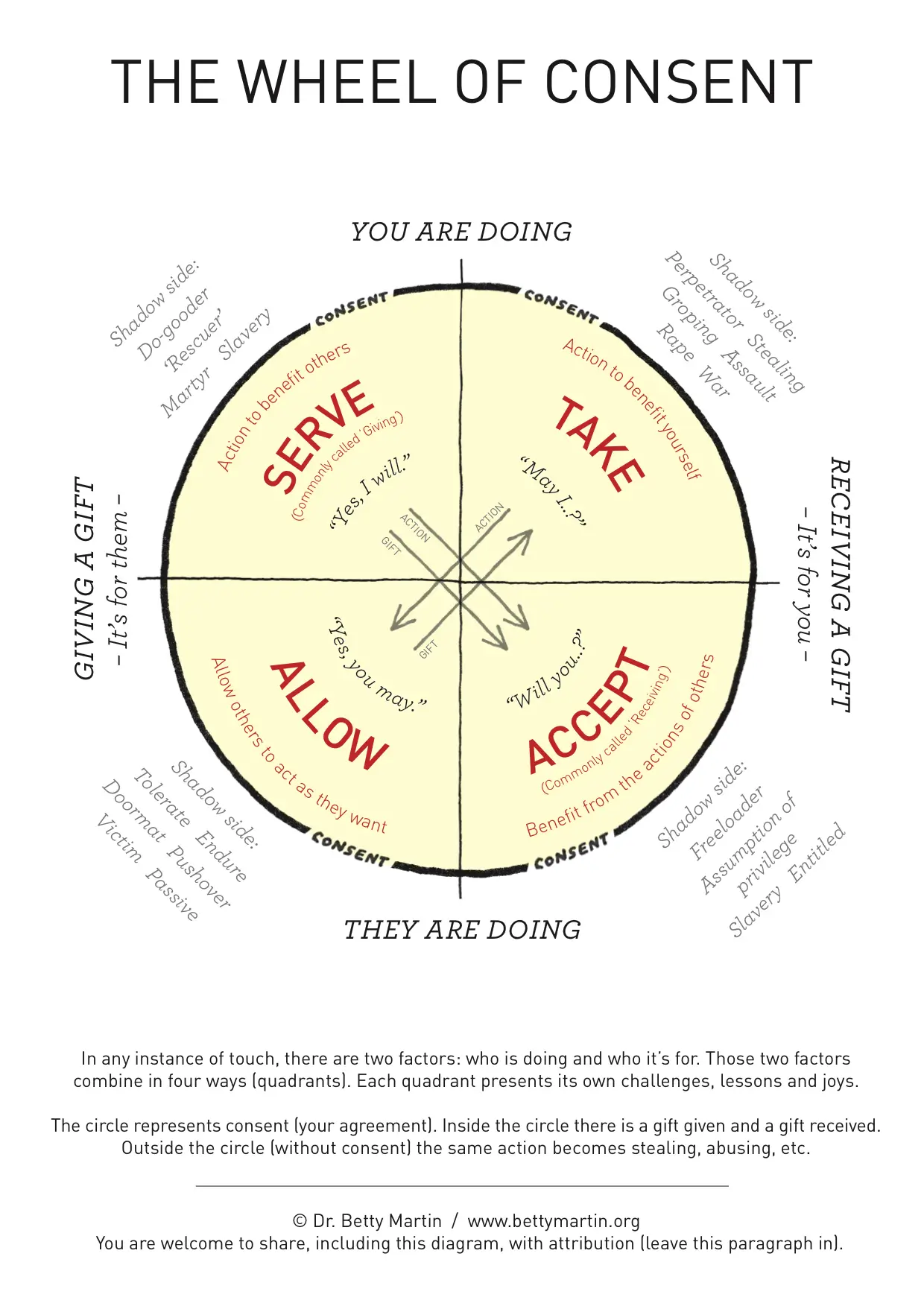 Home
Home
A framework for investigating and playing with relationship roles, created by Betty Martin.

Sometimes, we may feel that our relationships are becoming stagnant. We may simply wish to better understand our interpersonal dynamics, or we may want to try out new roles, experiencing ourselves in new ways. The Wheel of Consent, a concept originally created by Betty Martin, is a tool to support this process within appropriate boundaries and structure. It highlights the four roles we can take on in relationships and, by bringing them to conscious awareness, invites us to experiment with them. It is usually applied in a sexual context, although the principles are relevant to all aspects of communication.
Most of us naturally gravitate to one of the four roles that make up the Wheel of Consent. Once we become aware of our favored role, we can consciously decide to explore others, expanding our minds and challenging our own and others’ preconceptions. This can be very exciting and fulfilling.
The Wheel of Consent contains four distinct positions that people can adopt within a relationship. These are:
For the Wheel of Consent to function effectively, each person must agree to the implications of each role. The Taker consents to take from the Allower, and the Allower consents to having the Taker take. The Giver consents to give to the Receiver, who in turn consents to receive from the Giver.
Martin invented a three-minute game inviting participants to intentionally spend three minutes in each quadrant, exploring the potential of the different roles. For example, the Taker could say to her partner, “I want to touch you.” If the Allower agrees to this request, he nods his consent and allows the Taker to touch him however she wants for three minutes without touching her back. Then, they switch roles for three minutes: The Taker becomes the Allower, and vice versa, and the new Taker makes a request according to his desires. Participants can also make more specific requests, such as, “I want to touch you anywhere above the waist.” In this case, the Allower might agree to the entire request or modify it by saying something like, “I agree to you touching me, but only above the shoulders.”
To complete the Wheel of Consent, each partner experiences each role for three minutes, so the game proceeds with both taking on the mantle of Giver and Receiver. Partners take time to investigate the boundaries of each role, exploring their habits and desires. In healthy relationships, both people consent to their roles and respect their own and each other’s boundaries, experimenting with new roles to determine whether something else feels better. If you are used to playing the Giver, you may enjoy becoming the Receiver. If you usually slip into the role of the Allower, it may be a thrill to be the Taker for a while.
You should be aware of the shadow sides of each role. The Receiver’s shadow side is the freeloader, who assumes privilege and entitlement. The shadow of the Taker is the thief or perpetrator. The Allower’s shadow is tolerating mistreatment, while the Giver’s shadow is the rescuer, the do-gooder who invades others’ space. It’s valuable to experiment with different roles, but it’s important not to allow shadow sides to dominate, as these can cause rifts and toxicity in relationships.
 Home
Home

Don't have an account? Sign up
By creating an account, you are agreeing to our Terms of Use & Privacy Policy



